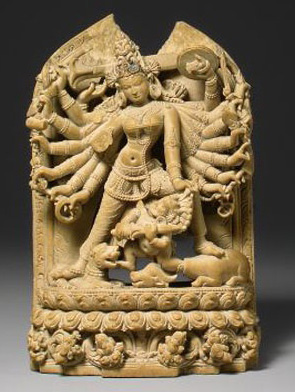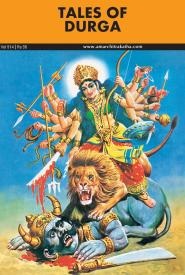
Jennifer Miller
Park Slope Collegiate
An Exploration of the Living Goddess of Nepal
|
Once students have studied the Kumari, they will be interested in studying Durga. Remind students that the Kumari are worshipped as the human, living forms of Durga. 1. Begin class by providing each group with one of the following images of Durga: 2. Each group should brainstorm different words to describe Durga. Create a list poem using the words they use. 3. In groups, students will read the following excerpt provided by the Rubin Museum of Art in their pamphlet entitled: Storytelling in the Himalayan Region.
In one version of this Hindu story, a shape-shifting demon named Mahisha Parvati, the wife of Shiva, offered to battle Mahisha. The Hindu gods were Mahisha sent two servants to subdue her. Durga tied ropes around their necks
4. Students will then watch the following youtube clip:
5. After both reading and watching about Durga, groups will combine what they’ve learned to write a dialogue of her story. Students will then act out their skits for the class.
|
||||||
This site was created by Jennifer Miller at the NEH Summer Institute "Literatures, Religions, and Arts of the Himalayan Region," held at the College of the Holy Cross, Summer 2011.



